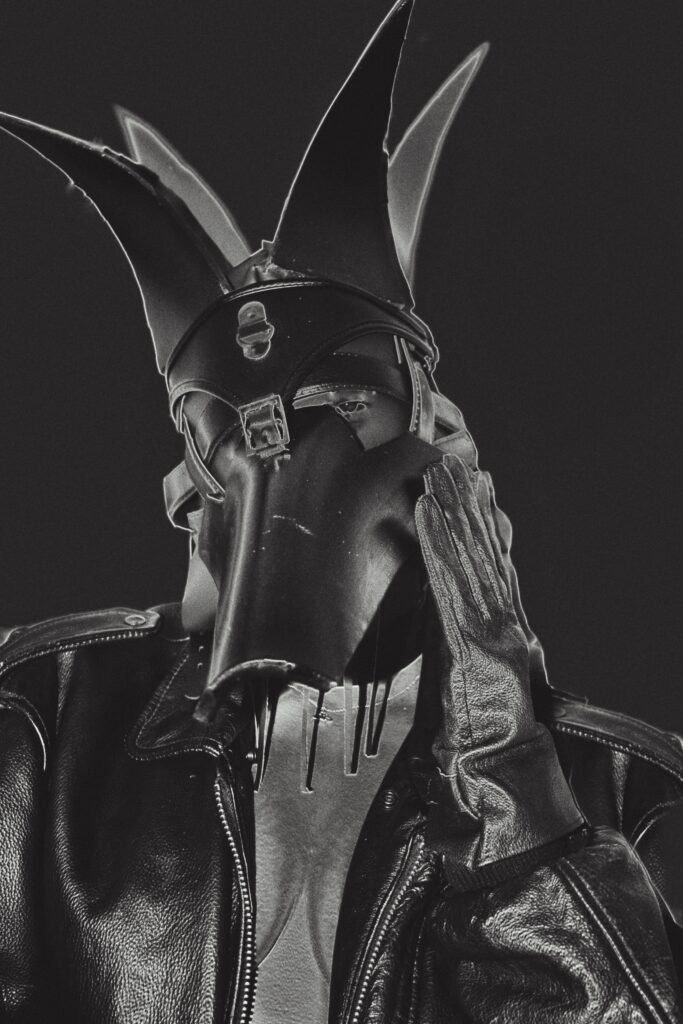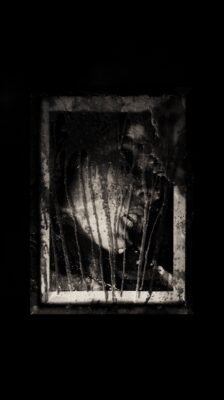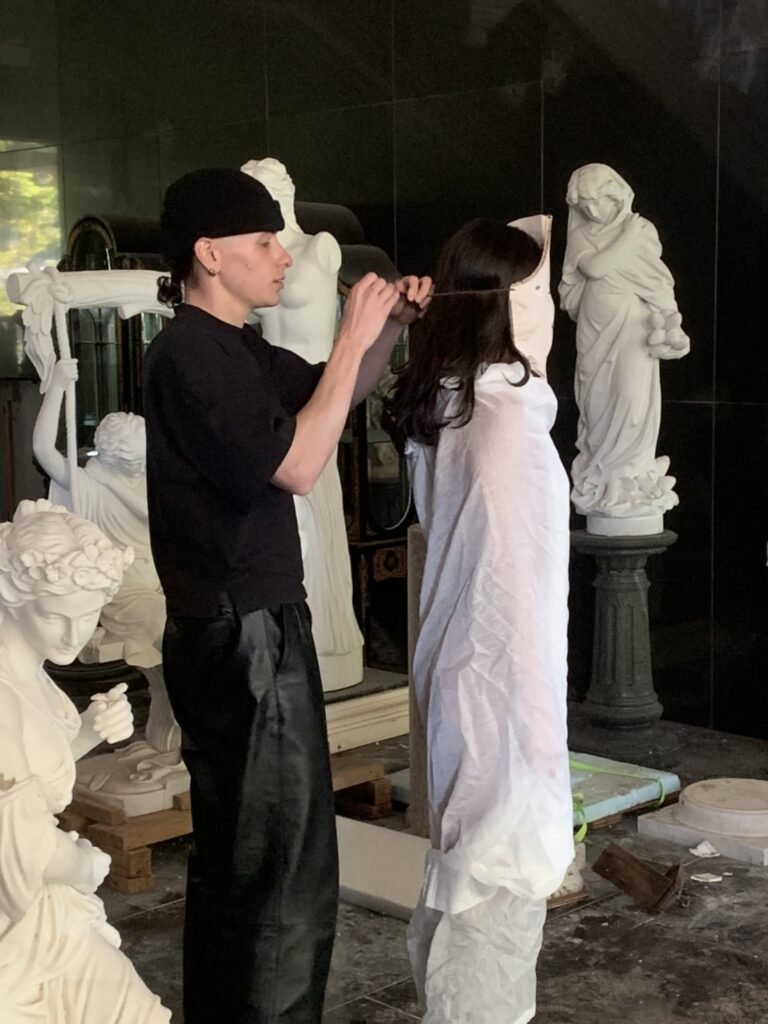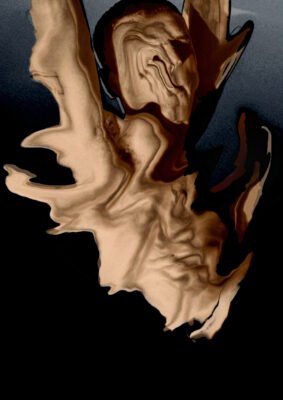Exhalaison by martin
Interview by Katarina Mladenovicova
You use a mix of a lot of different media and your style is pretty unique, could you describe both this style and explain the different tools you use?
Even if it isn’t the primary aspect, I try to keep the topic of lust in mind anytime I work on something. Lust encompasses a vast spectrum of contradictory and baffling feelings. In terms of medium, I believe most artists stick to one or the other, so you’re either a photographer or a painter, but not both. This is really restrictive and prohibits you from stating exactly what you want to convey. That’s why I’ve been trying with every available format/media in the hopes of discovering the perfect recipe, the perfect result. I also feel that it is the most effective approach for me to grow as an artist and to comprehend and learn about the experiences of other artists. That process has been very enlightening.
Could you talk about your last exhibition to us?
My most recent show was titled Exhalaison, a French word that simply refers to an odour or gas that emits from a person. The focus was solely on sexuality and my own experience with it, as well as how it can be both a joyful and terrible emotion. Passion is an unknown force that you may either control or lose control of. It’s also commonly misconstrued and mixed up with love. Lust has always been a divisive and difficult topic to discuss. What is it, exactly? Is it through pleasures that we find ourselves? Is it a sign of extravagance, of luxuries? Is it a good thing or a bad thing? Instead of taking on this theoretical picture, I took a step back and attempted to figure out how I felt about it.
I’ve always used desire to divert my attention away from my own issues. It doesn’t matter if it’s about relationships or just my everyday existence. So, in essence, this show was about my own sentiments, sadness, and other related topics. And, because it’s such a difficult idea to describe, I felt the concept of scent, such as ‘Exhalaison,’ was a good fit. It might be the smell of a lusty body or the smell of a corpse. Putting the terms “beauty” and “disgust” in the same bucket.
What I felt during your exhibition and with your creations is that they can be very dark and create this frightening and scary feeling but at the same time, I still felt a lot of comfort and warmth. Which are two things that I didn’t expect, this feeling of comfort was a surprise for me. How would you explain that?
That was the challenge in this. I was particularly interested in capturing the sensation of desire in print since it can be both dreadful and beautiful. And it’s a really unsettling sensation; gazing at it for an extended period of time is practically torturous. The same might be said of the video I played during the exhibition. It’s intended to signify beauty, however, in this case, beauty is shown as menacing rather than positive. I believe I was able to include this ‘neither beauty nor fear’ here, but I’m not sure what to call it. It reminds me of the earlier Japanese new wave.
And where would you say your inspirations come from?
Man-Ray is responsible for a lot of it because he uses so many different formats. I like how he didn’t limit himself to one type of photography, even though he lived in an area where editing wasn’t as prevalent as it is now. Because he didn’t have all of the computer-generated edits, he had to do a lot of hand editing, which is what I tried to do with my pieces. He was also one of the first surrealist photographers to use the concept of lust and the representation of sex, which was still misunderstood at the time. He was able to obtain extremely sexual photography despite the fact that he used mundane objects or only showed parts of the body.
We can indeed see a lot of surrealist influence in your work, the techniques, the melting photography …
Yes, Man Ray had this brilliant way of double exposing the negative photo with the positive to get this contour around the portraits, around people, which was something I always wanted to try.
And how would you describe your creative process? You’re mixing different media, is there one you would start with and go from there or it doesn’t really matter?
Leathercraft began as a personal interest for me. I have a lot of fun making BDSM masks. Everything was there since I had already started photographing and worked as a 3D artist when I was 15 years old. However, when it comes to my creative process, I typically simply get started when I feel like it. It makes no difference to me what occurs. It’s all about how you do things. So, when I have a lot of various feelings that I can’t talk about with my peers or when I’m not in the appropriate frame of mind, I generally attempt to paint or photograph them.
Do you feel like it helps? Do you feel like you found the right tool to externalize all these feelings?
It is hugely helpful to me. It clearly does not alleviate my depression or negative mindsets. However, it aids in my visualization and comprehension. Instead of allowing these emotions to become trapped within me, I externalize them by putting them in photographs.
And when you put it out there and share it with other people, do you feel like it helps people understand what you’re going through better? Or does it maybe open some conversation that wouldn’t have happened without those creations?
To tell you the truth, I don’t actually care. I don’t care what other people think of it; I don’t care if strangers come to the show and tell me how great it is. If that’s the case, I’m pleased, but it doesn’t move or affect me in any way. It’s a different situation for my close friends who come to look at my work and are aware of my personal connections and difficulties. That’s wonderful because I’ve always struggled to explain what I’m going through, but doing that makes it much easier to do so. When it comes to other people, though, you may say something as corny as “Well, that’s art, so think whatever you want about it.” But I try to make it clear what it is about and why I made it, and only then do people have the freedom to think whatever they want about it.
Coming back to the techniques you use, what was the project that was the most challenging to produce? Maybe you had the vision but not the tools?
The fact is, I didn’t start working with these formats until after I started working on this project. I’ve never done wax sculpting before, for example. I’ve just recently returned to 3D modeling after a six-year break, and as I previously indicated, the last time I did it, I was in high school, so it wasn’t very good.
Most of the pieces were emotionally difficult to create because they are so personal, but if we’re talking about technical difficulties, two pieces were a bit difficult to create. The first one was the wax mask because of the whole process of using fire. I almost burned down my house so I definitely recommend being careful with materials you don’t fully understand. Then there was the number of times it fell and broke, requiring me to remake it.
The other challenge was to render computer-generated masks in 3D on my models, as It required matching the lighting and other external factors in the photo.. I had previously only done leathercraft and worked with leather, fabric, and PVC foam. But I wanted to try something different, so I first did photogrammetry on some of those masks to get their virtual 3D model, and then I played around with remodelling them to get something that doesn’t look too 3D but still looks a little unreal when you look at the photo. That was both enjoyable and challenging, in my opinion.
And about the inspirations, I get that everything is very personal but how does being surrounded by so many young talented upcoming artists in Tokyo, a city with a very exciting but also very competitive scene, affect you as a creative?
When I first started out a few years back, I think the biggest issue I had was that I would compare myself to others instead of simply loving the scene. I had no notion of congratulating those individuals; instead, I was preoccupied with how poorly I was performing at times. Then, a few year after starting, I read a lot about Existentialism and the exploration of human existence and the experience of thinking, feeling, and acting, and it taught me that my happiness is truly not dependent on how other people view me, but that authenticity was key to making something greater. So for a year, I just stopped worrying about what everyone else was doing. When I altered my thinking, I was surrounded by individuals who encouraged me and showered me with love. It meant a lot to me when individuals I respect in the field told me they appreciated what I was doing. Overall, it can be uplifting and makes you feel like you’re in the proper place, surrounded by people who can assist you. Another benefit is that you can always go to someone who can help you with anything you know you can’t do yet. For example, I intended to 3D print the masks, but I didn’t have the necessary materials or skills to do so. So I went to my dear friend Reuben Chapman, who was really helpful and supportive. Because Tokyo is such a big place yet small creative area with such close proximity amongst artists, you get to know everyone and gain a lot of insights.
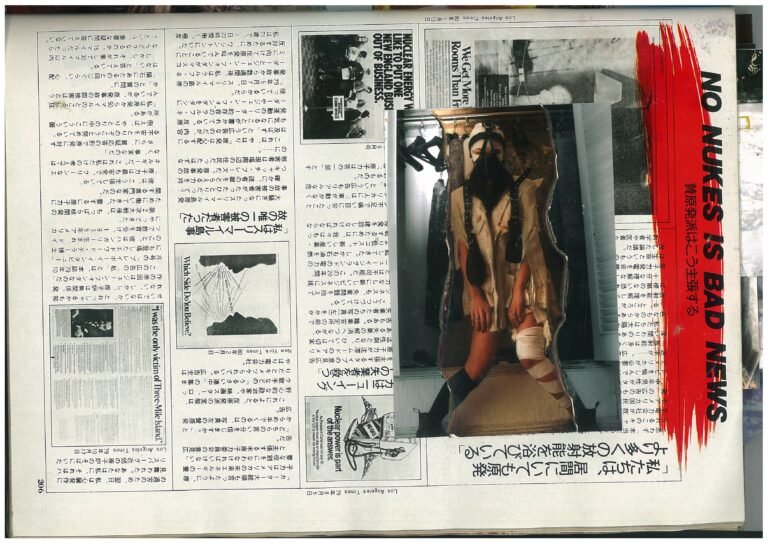
Continuing on Tokyo, do you think the city has something unique about its art scene?
Japan, in my opinion, has a significant problem with art since it is not considered particularly attractive. They regard it as simply commercial or absurdly useless in general. They don’t recognize it for what it is: an artist’s message. This is why, despite having a large number of talented artists, Japan does not have the same level of development as Europe. You are well appreciated in France, for example, and have the potential to be a successful artist. And I feel that, as a result of the restrictive stigma that surrounds Japanese artists, it creates a vibrant underground culture and artists who are not hesitant to do things that could be deemed indecent or provocative. The point is, that Japan’s art movement appears to be extremely young, even though it isn’t; the scene is young because people just aren’t interested in it yet. However, I believe that, as a result of this sad reality, anyone wishing to pursue a career as an artist in Japan may get started quickly. We’re in an age where everyone who wants to pursue a career as an artist will be a pioneer for the next 10 years.
How would you then describe that progress?
The work I showed at my last exhibition was still very family-friendly, I mean not that family-friendly but more than the rest of what I have. So I’m interested in working closely with the underground fetish culture and clubs In Japan to see what can be done there. My goal isn’t to create a pure and clean and rich exhibition in nice big galleries, that’s just not something I’m interested in. Of course, it is always nice to share my work with more people but my work is pretty much about a dirty underground culture, and that’s what I should focus on as well.
And talking about the future, what is upcoming for you?
So, the group exhibitions in Paris and Brussels mostly linked to the topic of sustainability. So I will be trying to work around the theme of fetish culture and linking it to sustainability ideas.
And on top of that, I am thinking of doing something in Kobe or Osaka, which is where I grew up as a teenager. And even if the interest there is even smaller, I hope we can change their minds.
And talking about the future, what is upcoming for you?
So, the group exhibitions in Paris and Brussels mostly linked to the topic of sustainability. So I will be trying to work around the theme of fetish culture and linking it to sustainability ideas.
And on top of that, I am thinking of doing something in Kobe or Osaka, which is where I grew up as a teenager. And even if the interest there is even smaller, I hope we can change their minds.


